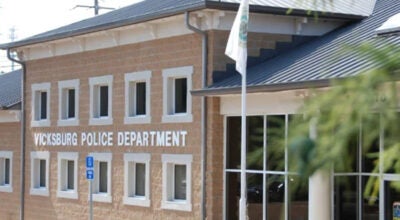Archeologists converge on Poverty Point to dig up truth about ancient mounds
Published 12:00 am Monday, September 25, 2000
Park manager trainee David Griffing holds the stone point of a spearhead that was found in the area of the ancient earthworks. In the background is one of several Indian mounds at the Poverty Point State Commemorative Area. (The Vicksburg Post/ROB MAXWELL)
EPPS, La. n Archeologists from around the country gathered at Poverty Point to dig up the truth about the ancient mounds that exist at the site.
“The Indians created something very special here that was probably very spiritual to them and that could be what motivated them,” Dr. John Clark with Brigham Young University said Saturday.
Clark was joined by 12 other archeologists and park service officials to study the mounds. The group shared their findings with the public Saturday at the park museum.
Poverty Point State Commemorative Area is about 50 miles from Vicksburg in West Carroll Parish. It is home to a bird-shaped mound built around 3,500 years ago.
The 700-foot-by-640-foot mound stands 70 feet high and apparently was built using 50-pound baskets over several generations.
The park also showcases a smaller mound that reaches about 20 feet and is thought to be a burial ground.
“I think the first baby steps toward civilization were started here,” Clark said.
Scientists have long questioned why the mounds were built in Louisiana years before they were constructed in other parts of the country.
“These people were hunter gatherers who supposedly wandered around a lot, but they took the time to do this and you wouldn’t expect that kind of behavior,” said Dr. Jon Gibson from the University of Louisiana.
Dr. Phil Carr from the University of South Alabama said questions swirling around the mounds could not be solved in a few days.
“I think what is important is what we can learn more about the people that constructed these and that could lead to an answer,” he said. “I just know how lucky we are to have this here.”
In August, some West Carroll Parish residents, who were unhappy with marketing efforts at the park, wanted it to be taken over by the federal government.
In September, The National Park Service declined to make Poverty Point a national park, saying the state was doing an excellent job.
Dr. David Anderson from the Southeast Archaeological Center said the weekend was exciting even if no solid answers were found.
“It is good to get together and have a dialogue about this with people you respect,” he said. “I think building the mounds brought these people together and kept them together and now they are bringing us together.”





